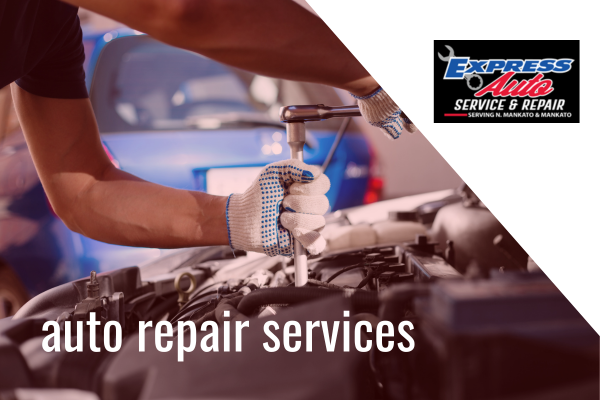All Categories
Featured

[/image]

Maintaining your automobile's tires is important to ensure a smooth, secure, and effective driving experience. Two key solutions that are frequently overlooked but have a substantial influence on tire long life and performance are tire rotation and positioning. These solutions aid keep your vehicle running efficiently and avoid irregular tire wear that can impact both safety and gas economic climate. Allow's study what tire turning and alignment are and why they are very important for your car.
What Is Tire Rotation? Tire turning is the process of moving your tires from one placement to an additional to guarantee they put on evenly. Considering that your cars and truck's tires operate at different prices depending on their position (front tires versus back tires), revolving them routinely helps to disperse the wear uniformly, bring about a much longer life-span for your tires.
Tires on the front axle tend to put on quicker than those on the back axle, specifically in front-wheel-drive cars, where the front tires take care of both steering and power. On the various other hand, rear tires could use unevenly depending on the vehicle's weight circulation and driving problems. By revolving your tires every 6,000 to 8,000 miles (or as recommended by the supplier), you'll ensure a much more balanced wear pattern.
What Is Tire Alignment? Tire alignment, additionally called wheel positioning, describes adjusting the angles of your cars and truck's wheels to the manufacturer's specifications. Appropriate placement makes sure that your tires are directing in the appropriate direction, and it assists maximize tire life and improve automobile handling. There are 3 main elements of positioning: camber, wheel, and toe.
Camber describes the tilt of the tires from the front of the car. If your tires are tilted excessive inward or external, it can trigger irregular wear. Caster refers to the angle of the steering axis when watched from the side of the cars and truck. This affects the security of the steering, especially when driving straight. Toe refers to the angle at which the tires point inward or exterior when viewed from above. This impacts exactly how your lorry tracks when traveling. A correct positioning guarantees that all 4 tires are directing right in advance and are angled properly. Imbalance can result from striking potholes, visuals, or merely from the wear of suspension components with time.
Why Tire Rotation and Alignment Issue. Extended Tire Life. Both tire rotation and positioning assistance avoid uneven tire wear. When your tires put on uniformly, they last much longer, which can conserve you money in the lengthy run by reducing the requirement for premature replacements.
Improved Safety And Security. Proper tire rotation and alignment boost lorry security and handling. Misaligned tires or unevenly worn tires can adversely impact your ability to steer and stop your automobile, specifically in emergency situation circumstances. Normal upkeep guarantees your tires execute ideally, supplying a much safer driving experience.
Much Better Gas Effectiveness. If your tires are not lined up appropriately, they may drag versus the road surface, causing resistance. This added rubbing can decrease gas performance, creating your car to take in even more gas. Routine tire positioning guarantees that your lorry moves efficiently, enhancing gas mileage.
Boosted Comfort. Misalignment or erratically used tires can result in a rougher experience, as your automobile may pull to one side or trigger vibrations. By keeping your tires turned and lined up, you'll take pleasure in a smoother and extra comfy driving experience.
Indications That Your Tires Required Turning or Alignment. It's important to remain sharp for any kind of indicators that your tires need turning or alignment. Watch out for these common indications:
Unequal Tire Use: If you notice that one tire is significantly more used than the others, it may be time for a rotation or placement. Guiding Pull: If your car draws away while driving straight, this can show misalignment. Vibrations: If you feel vibrations in the guiding wheel or the cars and truck itself, maybe an indication of imbalance or uneven tire wear. Screeching Tires: Unusual tire noise can also suggest inappropriate positioning or the need for a tire rotation. Just how Usually Should You Rotate and Align Your Tires? Tire turning need to generally be done every 6,000 to 8,000 miles or as defined in your lorry's proprietor's handbook. It's an excellent idea to rotate your tires during every oil modification, as this will certainly help you remain on top of routine upkeep.
As for positioning, it doesn't require as regular service. Commonly, alignment needs to be examined at the very least annually or whenever you observe problems like drawing to one side or vibration. You might likewise require placement if you've hit a big pocket or visual, which can toss your wheels out of placement.
Verdict: Keep Your Tires in Top Forming. Tire rotation and alignment are essential services that keep your automobile running efficiently, safely, and efficiently. By taking the time to have your tires revolved and aligned consistently, you're buying your vehicle's efficiency and longevity, while also boosting your safety and security when traveling. Keep aggressive with tire upkeep, and your vehicle will certainly thanks with better gas economy, improved handling, and extended tire life.
Latest Posts
Reasons Routine Car Maintenance at Montclare Auto Repair Keeps Your Wallet Happy
Find Out Save Big on Car Maintenance with Montclare Auto Repair’s Limited-Time Deals
Uncover Save Big on Car Maintenance with Montclare Auto Repair’s Limited-Time Deals
More
Latest Posts
Reasons Routine Car Maintenance at Montclare Auto Repair Keeps Your Wallet Happy
Find Out Save Big on Car Maintenance with Montclare Auto Repair’s Limited-Time Deals
Uncover Save Big on Car Maintenance with Montclare Auto Repair’s Limited-Time Deals